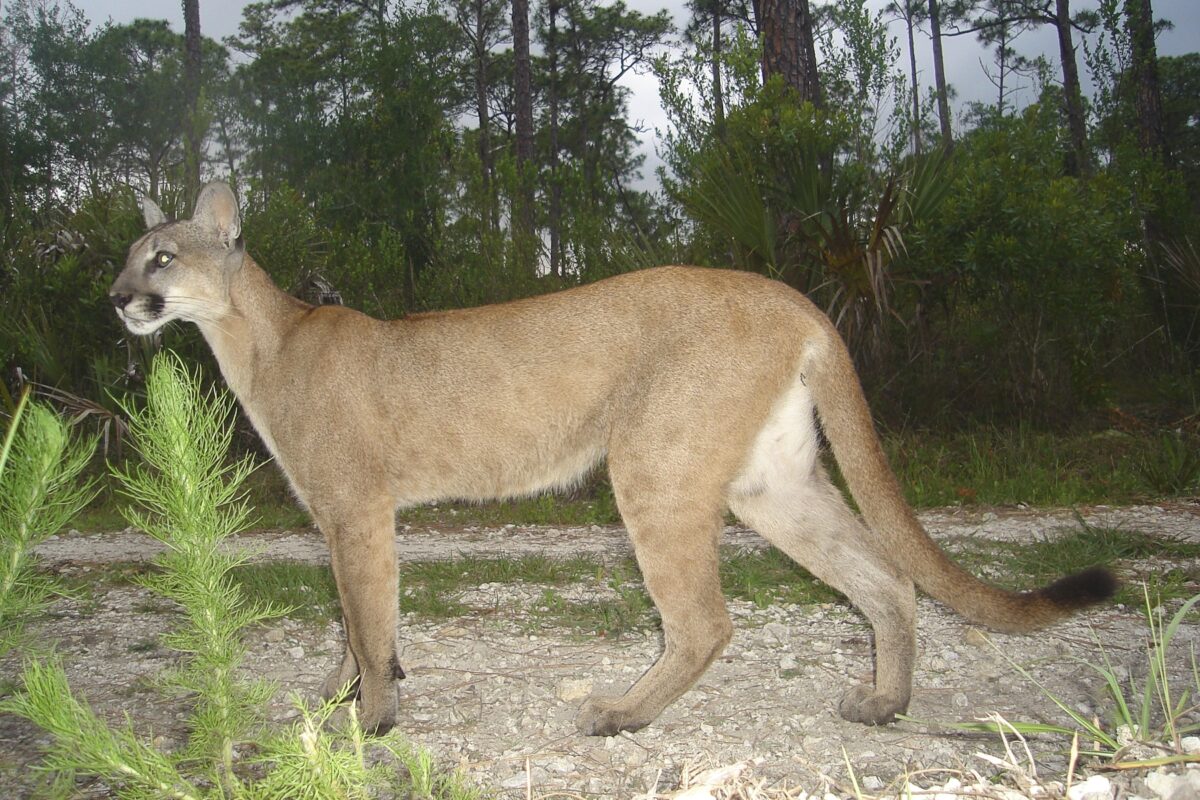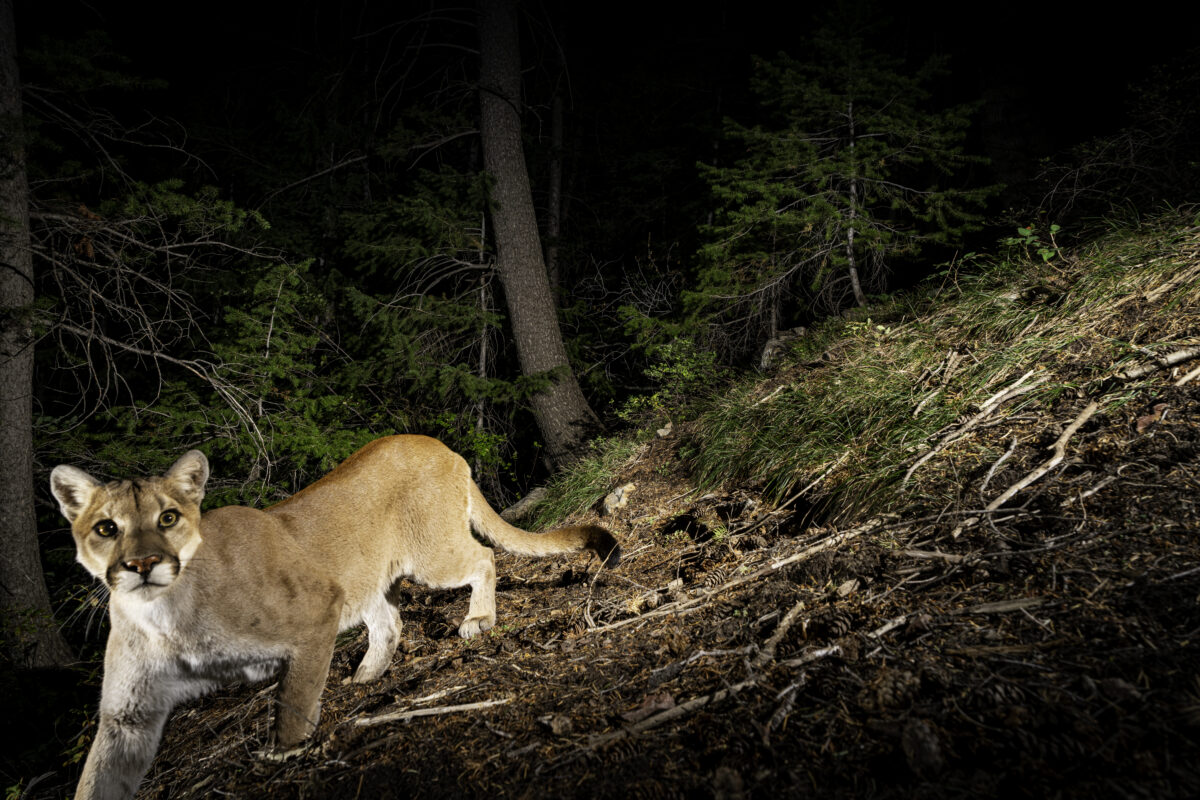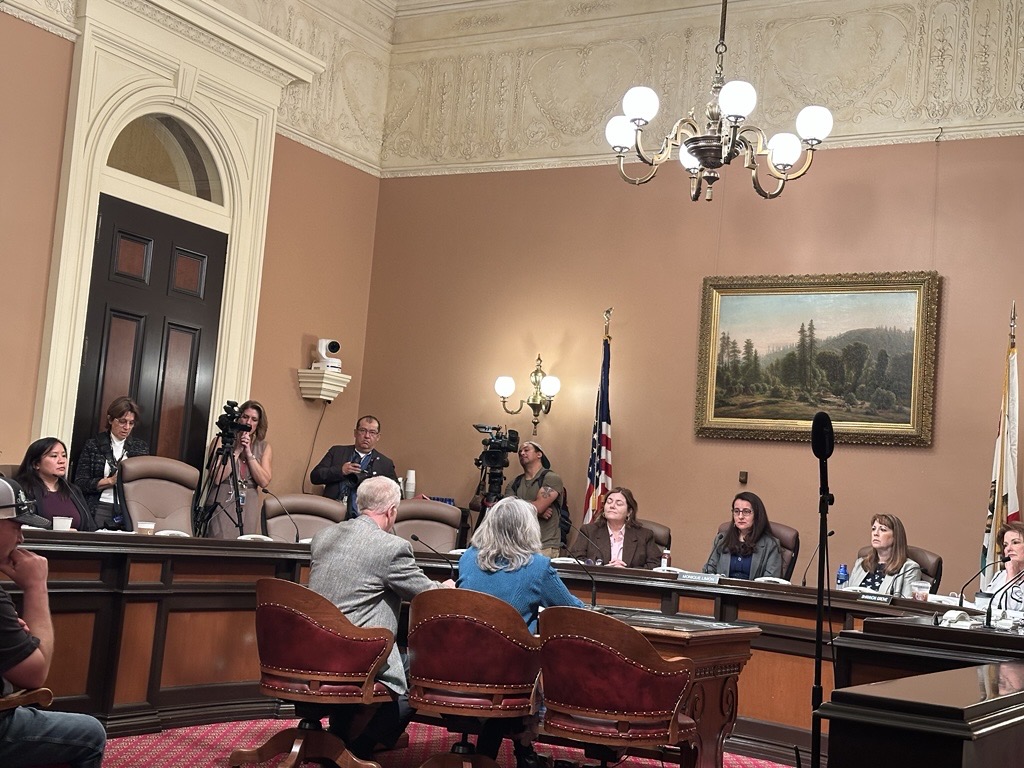By Paige Munson, Science and Policy Coordinator
Wildfires in the United States spark concern for the future of wildlife including mountain lions. To understand how fire will impact mountain lions, we need to understand how we got to our current situation, and why not all fires are the same.
History of fire suppression in North America
With the growing frequency of these fires, many researchers have focused their work on understanding why there are more fires now. The answer is multi-faceted, and it begins centuries ago when the United States began to seize land from indigenous communities. Many tribes across the US and Canada utilized controlled burns to steward the land. This tradition had many practical benefits and contributed to the “pristine wilderness” that was “untrammeled by man,” praised by the likes of John Muir and his contemporaries.
However, in reality, the land had never been pristine, and man had “trammeled” it for thousands of years in the form of controlled burns to keep forests healthy. To learn more about indigenous fire practices, listen to this episode of the Ologies podcast, hosted by Alie Ward, with special guest Dr. Amy Christianson.
When the United States government first took charge of land management, controlled burns ceased in most forests. After a series of vast wildfires across the West at the beginning of the 20th century, managers decided that complete fire suppression was the only acceptable policy. Federal agencies and the timber industry viewed fires as lost revenue and even a loss for war efforts throughout the 20th century. Thus began a regime of fire suppression that has persisted for more than a century.
A look at historic fire prevention posters shed some light on the attitudes around fire in the United States and make us all grateful for their successor, Smokey Bear.
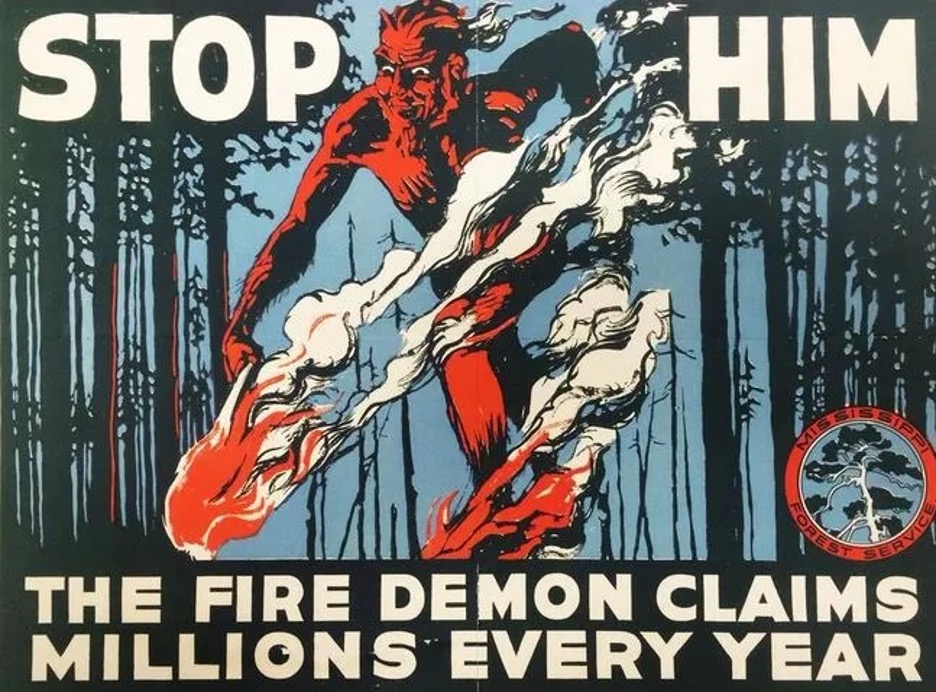
Controlled Burns
Controlled burns serve a variety of purposes, but one of them is to help prevent large, devastating canopy fires. Canopy fires, aka crown fires, are the most dangerous type of fire because they spread rapidly jumping from tree crown to tree crown. One of the greatest losses in wildfire is the death of large, old trees, which are more likely to die in canopy fires.
Controlled burns help reduce the amount of fuel available to burn. If a wildfire starts, reduced fuel loads can mean the fires do not grow as large because the forest undergrowth has been thinned, allowing for more space between the understory and canopy. This gap can help small understory fires from reaching the canopy of older trees.
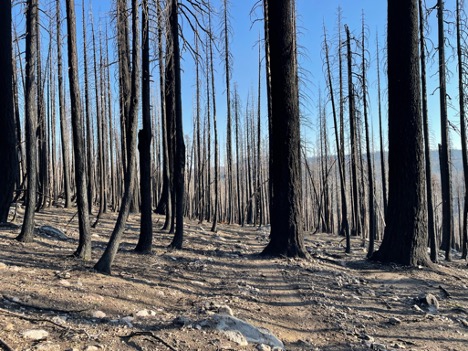
A forest that has undergone a controlled burn will recover in a way that promotes forest health and recovery more quickly. On the other hand, when an “overstocked” forest experiences a wildfire that results in large amounts of tree mortality, it will take decades or possibly even centuries for the forest to contain old growth trees again. What was once a dense canopy of old growth will more likely convert to a shrub- or grass-dominated landscape.
Fortunately, federal and state organizations have largely come around to controlled burns, and there is a wider acknowledgement that this indigenous tactic for land stewardship is an essential tool for land management. However, after a century of fire suppression policies and new fire challenges to overcome, there is still a lot of work to be done.
Climate Change
Climate change continues to create hotter drier landscapes that are more likely to burn hotter with larger wildfire patch sizes. Climate change is also lengthening the fire season so that conditions remain hot and dry. Additionally, prescribed burns can only be done in specific conditions where temperatures are low enough, humidity is high enough, and winds are unlikely to exacerbate the burn. As climate change reduces the time that agencies can manage controlled burns, it makes it more difficult for managers to perform these prescribed burns and prevent fires in the future, which may require machine and manual removal of fuel.
The region for fire prone areas is also expanding. As more regions become drier and warmer, they will be prone to fire regime changes (a fire’s pattern, frequency, and intensity) into landscapes that may be less adapted to fire.
Human-caused fire
Without human intervention fires typically only start from lightning or volcanic activity. Most fires are started by people, whether it is a campfire gone wrong, a hot car over dry grass, a cigarette gone astray, or fallen lines from a utility company — humans are the cause of these fires. Humans have a long history of accidentally or purposely setting things on fire, and that is unlikely to change. By using active forest management techniques, we can work to get ahead of the fires we will continue to set so that there are more little fires than massively destructive ones.
Mountain lions and fire
Mountain lions will be impacted differently depending on whether the fire is a management tool (i.e., controlled burn) or an unintended wildfire. The landscape where the fire occurs will also dictate its impact on the species around it. For example, certain habitat types such as chaparral are prone to vegetation conversion, where the landscape is often converted to grasslands. Conifer forests are more resilient to fire, but the large destructive canopy fires that kill all trees in an area can result in conversion to grasslands or shrubland habitat. These converted grassland habitats are also likely to be inhabited by an influx of invasive species. The branch of ecology focusing on how animals respond to wildfires is still progressing, as there is such a diversity of fire circumstances in differing vegetation communities to assess.
Mule deer have been shown to avoid burned areas in the first years after a fire but prefer the burned habitat afterward, as vegetation starts to recover. This is likely to occur when the fire promotes shrublands, which are critical to mule deer success. In a conifer forest, dense layers of saplings in the understory can crowd out shrubs and forage that are vital to mule deer. Once this is removed, shrubs are likely to better recover, creating more ideal forage for mule deer.
National Park Service (NPS) collaring has allowed for research into mountain lion behavior immediately after the Woolsey fire of 2018. This population of mountain lions faces unique threats and pressure due to habitat fragmentation via human roads and urban areas. Researchers found that this fire reduced the quality of habitat available to both ungulates and mountain lions. For mountain lions the reduction in habitat quality likely stems from greater prey scarcity and lack of cover to ambush prey.
In these conditions mountain lions began exhibiting more risky behaviors, such as crossing roads more frequently and coming closer to humans. Mountain lions also began traveling greater distances and thus, more frequently overlapped ranges with other mountain lions. This increased movement may signal that the lions needed to travel more to find food. By increasing their range overlap, the lions also increased their likelihood of conflict with other lions.
Thesis research on mountain lion habitat selection after the Woolsey fire found that mountain lions utilized burned areas soon after the fire, and particularly selected for areas where there were unburned patches, or at the edge of a burned area. The thesis author suspected this afforded increased hunting opportunities. However, the author did not believe this to offset the negative impacts of increased risk and food scarcity immediately after the fire. Their work is consistent with other findings showing that habitat heterogeneity is selected among large mammals post-fire.
For more information on how climate change will impact mountain lions, including some thoughts on how they will respond to more frequent and more intense fires, see also this webinar from the Mountain Lion Foundation, featuring lion researcher Dr. David Stoner.
The impacts of wildfire and controlled burns on mountain lions have important conservation implications for the species. Fire has the potential to be both a tool in the conservation of mule deer and mountain lions, and a threat to their populations as well.



 Facebook
Facebook Twitter
Twitter Send Email
Send Email